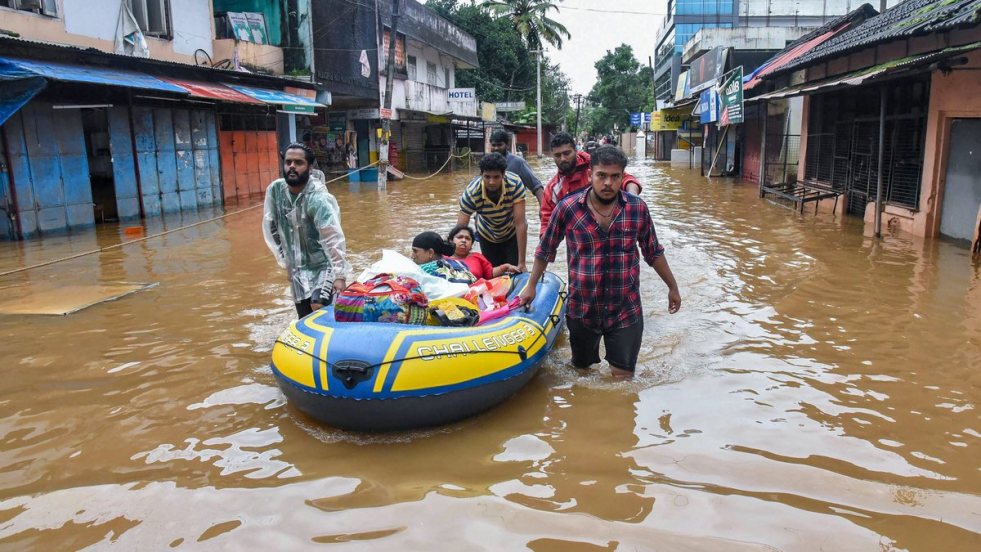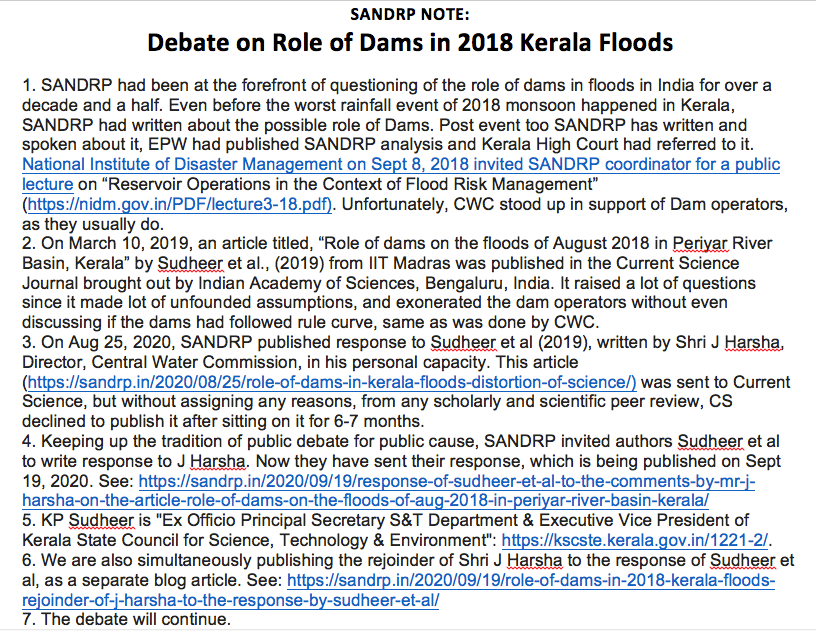Rejoinder Article by: J.Harsha
An article titled “Role of dams on the floods of August 2018 in Periyar River Basin” was published by Sudheer et al. (2019) in Current Science. A rebuttal was prepared and thanks to South Asia Network of Dams, Rivers and People (SANDRP), the same was published by SANDRP on 25th August 2020 (https://sandrp.in/2020/08/25/role-of-dams-in-kerala-floods-distortion-of-science/) for which Sudheer et al. (2019) has now furnished a response (https://sandrp.in/2020/09/19/response-of-sudheer-et-al-to-the-comments-by-mr-j-harsha-on-the-article-role-of-dams-on-the-floods-of-aug-2018-in-periyar-river-basin-kerala/).
In the rebuttal published by SANDRP, I had questioned the very basis of fitting HEC-HMS model for Periyar River Basin (PRB) by Sudheer et al. (2019), and also challenged the assumptions made by them, the methodology followed and the consequent voluminous inferences such as catchment response at Neeleshwaram (L2), virgin simulations, bank full discharges and particularly inferences that indicted nature for the flood calamity but exonerating the role of dams for the floods of Kerala in 2018.
Continue reading “ROLE OF DAMS IN 2018 KERALA FLOODS: Rejoinder of J Harsha to the response by Sudheer et al”

